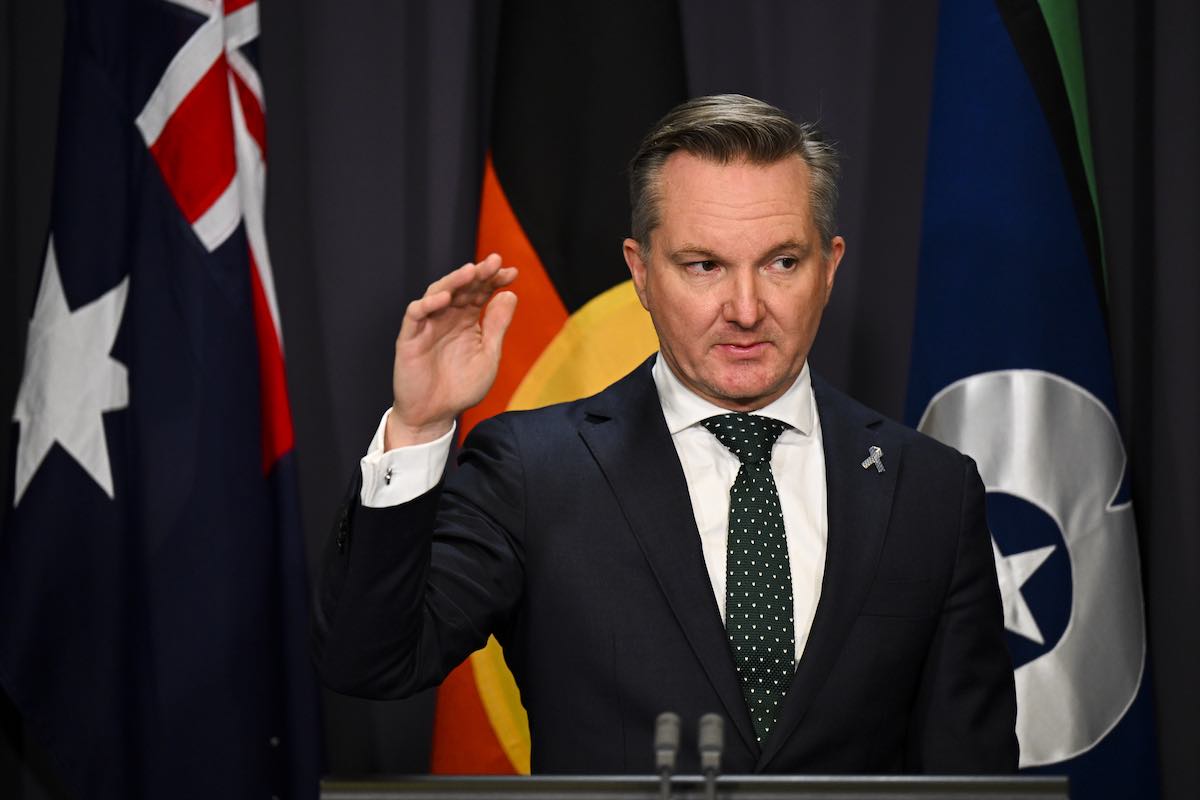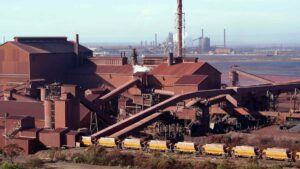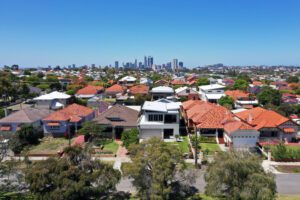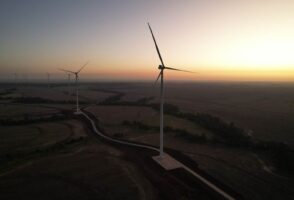The federal climate and energy minister Chris Bowen says the stunning slew of temperature records around the world over the past week is a reminder that climate change is no longer a forecast, but a “lived reality”, but insists that current policy settings are ambitious enough.
In a wide-ranging interview in the latest episode of RenewEconomy’s weekly Energy Insiders podcast, Bowen was asked if the new temperature records, and forecasts that 2023 could be the hottest year ever, were cause to put in place policies consistent with a 1.5°C target.
Bowen says the country is still playing catch-up after a decade of non-action by the previous Coalition government, and its current policies – a 43 per cent cut in emissions and an 82 per cent renewables target for the electricity grid by 2030 – are highly ambitious, but achievable.
“It’s certainly a spur to keep going,” Bowen said of the temperature records, which included new daily average temperature highs for the planet on four consecutive days.
“There’s some who say … that we are doing too much. And we should pause. That gets said in Federal Parliament a lot by the alternative government that there’s too much happening on climate change.
“They also spread the fallacy that renewable energy is what’s putting upward pressure on power prices, they are opposing the necessary transformations in our grid.
“We have a different view. But I would say this … we’re now got seven years to 2030, which is not long, we only started in 2022.
“So the best time to start would have been 10 to 15 to 20 years ago, of course, when the science was clear. Climate change is no longer a forecast or a prediction. It is now a lived reality. But we’re playing catch up very, very, very fast.”
1.5°C climate target
Asked again about a target consistent with 1.5°C, which scientists and advisors say would require an emissions cuts of more than 60 per cent by 2030 at the very least, Bowen said:
“We are going at a cracking pace. I mean, 43%, you might argue, and some might argue, needs to be higher, but 43% is underpinned by the 82% renewable energy target up from around 35% where we are today.
“It’s very achievable. But it’s ambitious. If people want to argue that we should be doing more, they have to point to what exactly they will do that we are not already doing with the massive rollout of renewables with the transportation plans … the 5% emissions reduction each and every year required for now 250 biggest emitters, and putting emissions reduction in the National Energy objectives and gas objectives.
“Yes, we need to keep going and where we can, of course, things should be done as quickly as regularly as possible. But this is the catch up that we’re playing.
“Ideally, if we’d had three or six or nine years longer to get done, yes, of course, you can do different things. But starting from where we are in 2022, things are going at a very rapid pace.”
Renewables target
There has been growing concern about Australia’s ability to reach the 82 per cent renewables target, because of a fall off in new investment and approvals, and issues such as the lack of transmission, connection challenges, and social licence. Some have called for the target to be abandoned.
“I do not accept that (it is not achievable),” Bowen said, adding that many of the big global investors had told him that Australia now ranked as a prime destination for their capital.
“We’ve got the capital, we’ve got the policy, we’ve got the technology, we’ve got the pipeline, I want to see more of that pipeline, moving to final investment decision … and environment approvals rolling out.
“Yes, there’s always something to do in those areas. But it is very achievable, it has to be achievable, because we have no chance of meeting our obligations … unless we get cracking on that job.
“It’s fashion (for some) to say 82% and 43% is too ambitious. I reject both of those. It’s ambitious, but achievable.”
One of Bowen’s signature policies is the Capacity Investment Mechanism, which the Labor government intends to use to drive investment in “firm renewables”.
Eraring closure
The policy has already begun in NSW, with a near trebling of the two-hour firm capacity sought by the NSW government to 930MW (to help replace the soon to be shuttered Eraring coal generator), and will be rolled out in Victoria and South Australia by October, likely with different storage durations.
“We’ve nailed the model. It does provide some flexibility, in terms of dealing with each jurisdiction’s needs. There has been consultation with key industry groups,” Bowen said. “There’ll be some more formal consultation over the next few weeks with a consultation paper and going out in about a fortnight.”
RenewEconomy asked if Eraring likely to close, as currently indicated, by August 2025, given the problems in NSW in building sufficient capacity by that time to fill the gap. It has been suggested some units may be kept open for another summer, while others suggest that the closure should be delayed for a long time.
“Nobody has suggested to me that we need a mechanism to keep Eraring open for anything longer than, at most, a relatively short period of time. And only then if it’s necessary in terms of the grid,” Bowen said.
“I think that’s prudent. That’s the way Origin has said they’re looking at it, it’s the way New South Wales is looking at it. I think that’s prudent going forward. August 2025 is the indicative date. But there is time just to make sure that everything’s in order to make sure that that is the right day.”
Offshore wind
Bowen also said a new offshore wind zone, in the Hunter region, will be officially declared on Wednesday, adding to the Gippsland zone and the newly proposed zone around Portland in Victoria.
Bowen also said that the fuel emissions standard would aim to go as hard as was possible, and he was encouraged by the strong boost in EV sales over the last year, despite lingering problems with supply.
“There’s no point doing a fuel efficiency standard unless it moves the dial, unless it works, unless it’s ambitious,” Bowen said. “But also, it’s got to be achievable.
“And this is … welcome to the Climate Change portfolio, everything is going to be ambitious. But targets have also got to be achievable. I could say 100% tomorrow, if I felt like it, and some people out there in the market, political market, say those sorts of things.
“But it’s my job as the minister, then to explain how we’re going to get there. The moving levers about the actual delivery, that’s actually my job.
“And so the fuel efficiency standards … are key for affordability to get more affordable models into (Australia). I’m pleased that … we’ve seen a big increase a big, big issue increase in affordable models coming into Australia, but I’d like to see a lot more.”
You can listen to the full interview with Bowen in the latest episode of the Energy Insiders podcast here.










